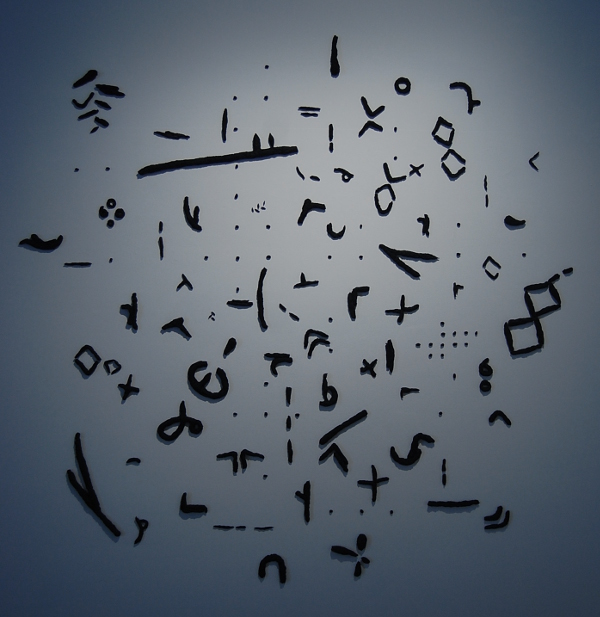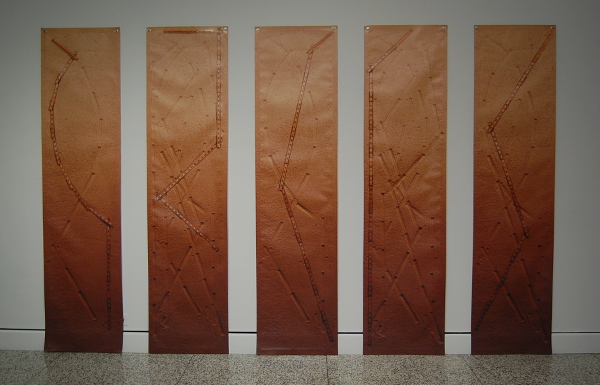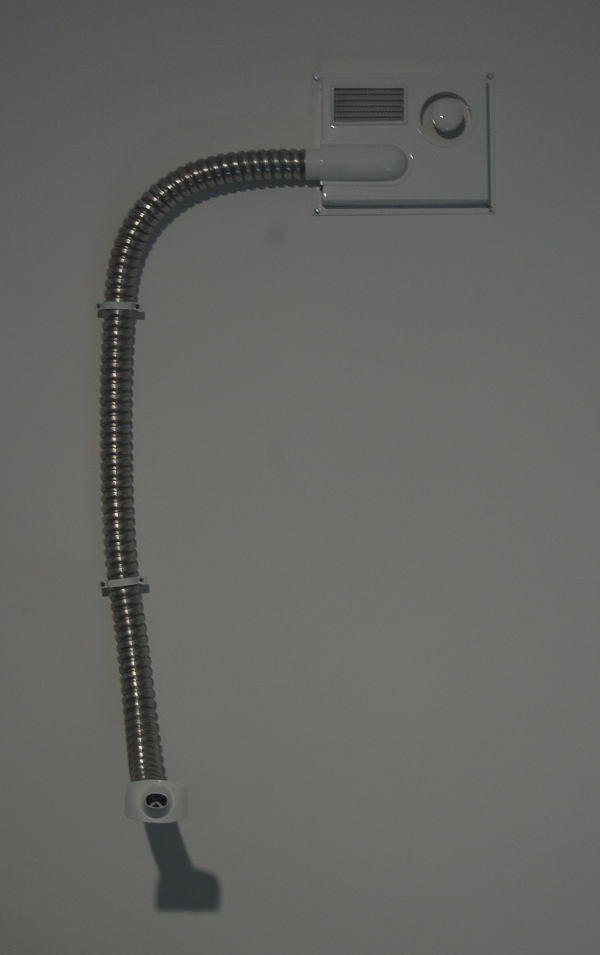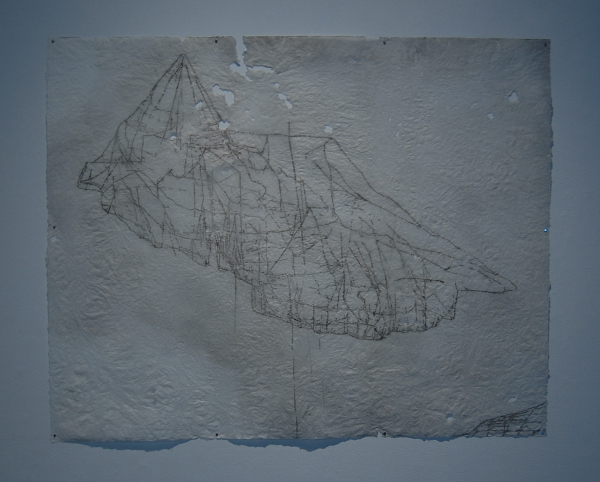
Teaching artists at Moore perplex and challenge in “Liminal Sites”
The Galleries at Moore have a knack for hosting some extremely noteworthy shows in their multiple ample gallery spaces located on the first floor of the school’s Center City campus. Their current tri-annual faculty exhibition, “Liminal Sites,” is no exception.
With work by a dozen artists, “Liminal States” explores the creations of current Moore teaching faculty as art that defies traditional methods and media. Through a break with standard practices, the artists are free to explore the ambiguous, temporal, or hidden by way of processes, media and objects that refuse to be quantified or nailed down.
Andrea Gaydos Landau presents an array of dark forms that spread out across an entire wall for her piece entitled “Coda.” Although entirely without an anchor in actual symbols, the individual bits appear somewhat linguistic or even musical in their content, and the title subsequently hangs over the images like, well, a coda. The entire piece reads much like a jazz improv performance. One can step back and bask in the negative space – the ‘rests’ between these ‘notes’ – as well as the characters themselves, and become awash in an esoteric language whose only apparent entry point is rhythm.
Sreshta Rit Premnath, “Plot.”
Five panels of UV ink on tall, columnar, vinyl sheets by Sreshta Rit Premnath stand vigil in the Goldie Paley Gallery. The work is entitled “Plot” and each of the prints is a variation on a theme: a carpenter’s ruler zig-zagging through sand, and the accompanying marks made by former placement of the same device. At a distance the indentations look almost like stitches on a pigskin football as the sand grains blend into a smooth, leathery surface wound through with line segments. What Premnath is measuring, we may never know, but the path of his actions leaves us with a treasure map of trails and textures.
Andrea Miller, “Conditioner.”
On a nearby wall, a strange appliance is set into the wall, its rectangular white fixture matching the surrounding walls besides its sheen against the matte paint. Andrea Miller’s “Conditioner” seems like it could easily be a stray part of the air condition system if not for its accompanying tag revealing that it is, in fact, art. The metallic, ribbed hose affixed below it appears functional but its name implies only a tenuous purpose. It may be more about the conditions we project onto it (like the fact that it appears to be part of the HVAC equipment) than what it can physically do; it conditions only our minds through its lack of context, but otherwise possesses no practical function.
Alexis Granwell, “Eternal City (through the fog).”
Closer to a traditional work on paper is Alexis Granwell’s drypoint print “Eternal City (through the fog).” The indistinct lines are rendered in a gray graphite-like color and exist as a framework and barely resemble an actually city, save perhaps from above. Aside from a network of poorly planned roadways, the form also references geology in its faceted structure. The looming peak of a mountain high above the obscured urban landscape. All of this rests solidly on a wrinkly – and in some places tattered – sheet of abaca paper, adding a bumpy terrain across the whole piece’s surface.
The teaching faculty of Moore present these and many more nebulous works and concepts in “Liminal Sites,” which challenge both perception and production of art that, in many ways, defies analysis, or at least narrative. Terri Saulin Frock and Alexis Granwell will be hosting a “Tag Team Talk” in the Widener Memorial Foundation Gallery from 11:30 a.m.-12:30 p.m. on Thursday, November 7 to discuss their practice. The entire exhibit will be on display through December 14.
Moore College of Art & Design is located at 20th Street and the Benjamin Franklin Parkway, Philadelphia; 215-965-4027; moore.edu.
Recent Content
-
Artsarticle ·
-
Artsarticle ·
-
Artsarticle ·



